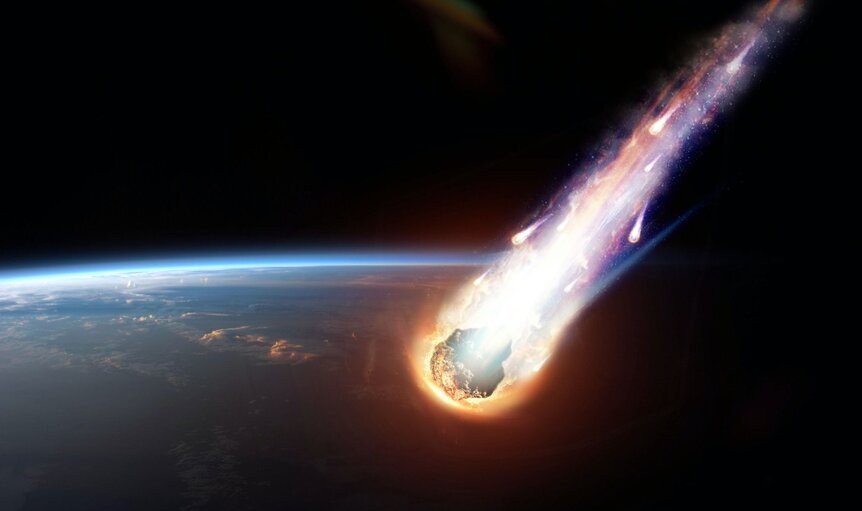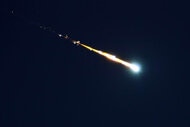Create a free profile to get unlimited access to exclusive videos, sweepstakes, and more!
"Boomerang Meteorite" Left Earth, Went to Space, Then Came Back
Scientists found a meteor which might have originated on Earth.
In 1970, three NASA astronauts boarded a small spacecraft on the third crewed landing trip to the Moon. They would never get there. Shortly after leaving Earth, a malfunction with one of the oxygen tanks threatened the safety of the vessel and the crew. Suddenly, a journey of exploration became one of the highest-stakes rescue missions of all time, as the crew of Apollo 13 flew a broken spaceship around the Moon and safely back to Earth. Director Ron Howard immortalized their story in the appropriately named Apollo 13, streaming now on Peacock!
With the help of a dedicated team on the ground, the crew of Apollo 13 made it home alive by the skin of their teeth. The crew endured a harrowing trip unlike any other, except for one. Now, scientists have discovered a meteorite which may have launched from Earth, spent several thousand years drifting through space, then returned home.
A New Class of Terrestrial Meteorites
The rock was discovered several years ago in the Saharan Desert of Morocco. Researchers acquired it from a Moroccan dealer who likely bought it from nomadic Bedouin tribes who found it in the desert. As such, it’s unclear precisely where the meteorite landed.
RELATED: 4.5 Billion Year-Old, Rare Meteorite Crashes Through Hopewell, New Jersey Roof
Dubbed NWA 13188, astronomers believe it might be the first known example of a “boomerang meteorite,” one which originates on Earth, gets knocked into space, then falls back to the planet’s surface. That hypothesis is based on initial analysis of the rock. The analysis was shared at the Goldschmidt 2023 geochemistry conference but has not yet been peer reviewed.
NWA 13188’s chemical composition is consistent with earthly volcanic rock, suggesting that it may have come from here, but it has a well-developed fusion crust, a tell-tale signature of meteorites. When a meteorite enters the Earth’s atmosphere, it’s travelling so fast that the air in front of it is compressed and heats up. All of that heat and friction melts the surface of a meteorite and the newly liquid rock gets ripped away by the wind, revealing fresh rock beneath. That process continues, whittling away at a meteorite, until it slows down enough that melting ceases. When that happens, the last layer of melted rock cools, forming a fusion crust.
The unusual combination of seemingly earthly rock with a fusion crust is something we haven’t seen before, causing some astronomers to suggest this is the first known terrestrial meteorite. Their hypothesis is supported by concentrations of isotopes 10Be, 3He and 21Ne, which are too high to have been facilitated by terrestrial processes. They are, however, consistent with a relatively brief period of exposure to galactic cosmic rays (GCRs), on the order of approximately 10,000 years.
It seems clear that NWA 13188 spent at least a few thousand years in the vastness of interplanetary space before plummeting to the Earth. The only remaining question is whether it actually came from here in the first place. With a claim as wild as this one, a certain amount of skepticism is warranted.
It isn’t easy getting back to Earth on your own steam, just watch Apollo 13, streaming now on Peacock!



















